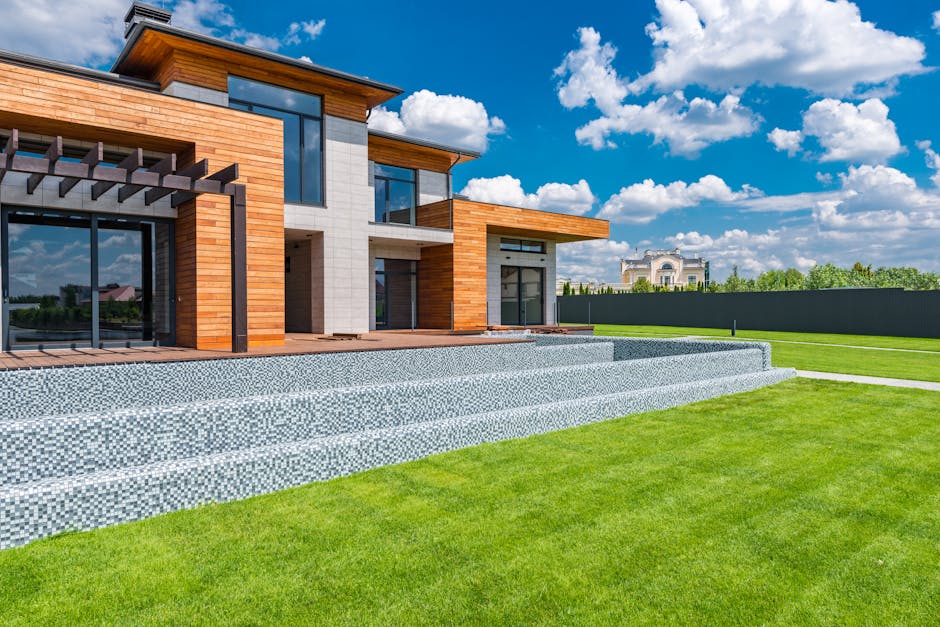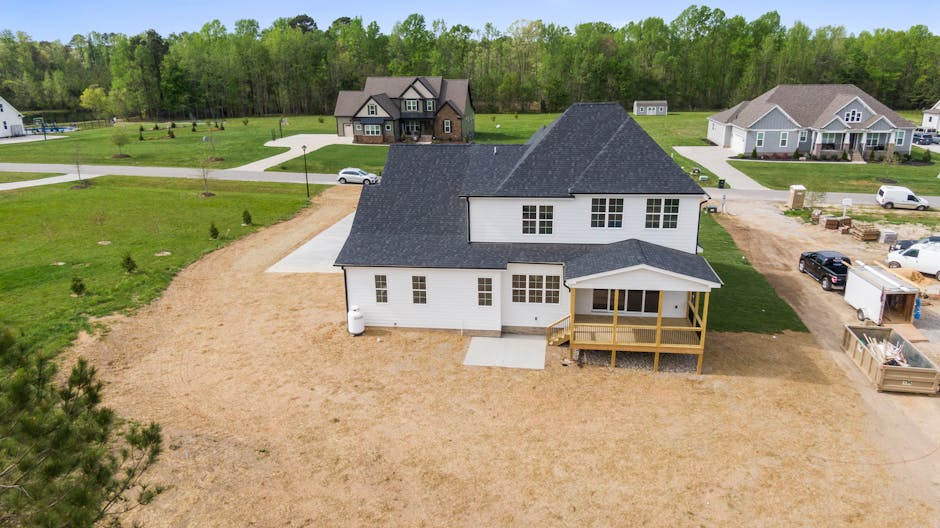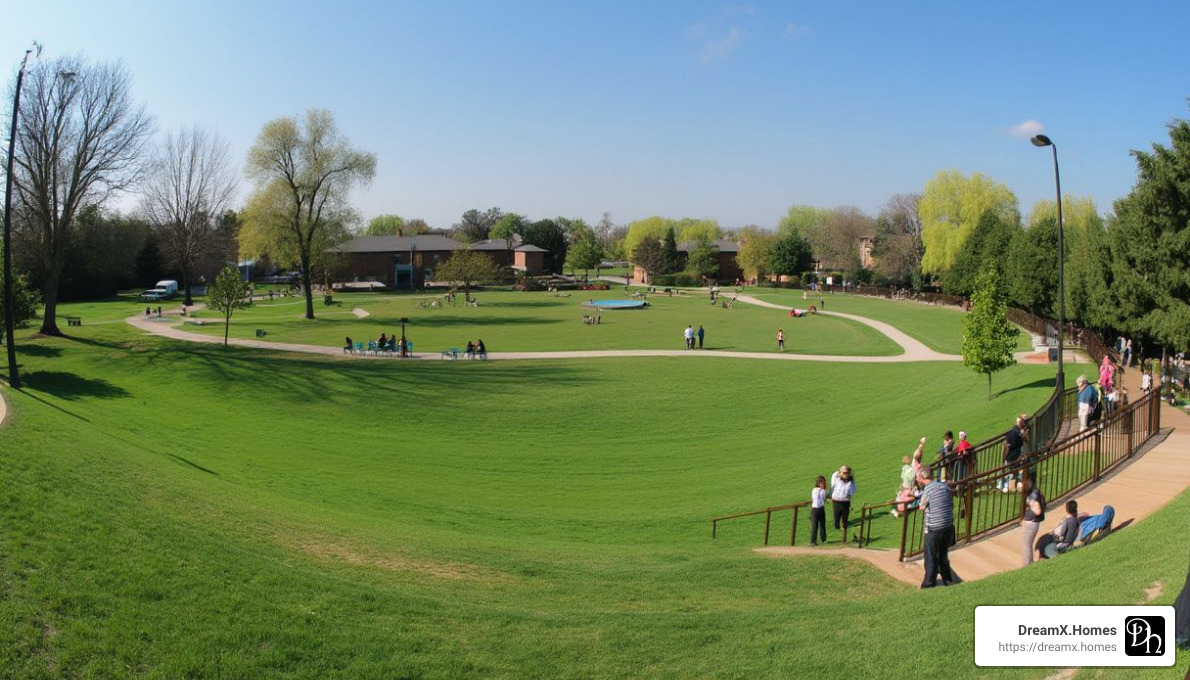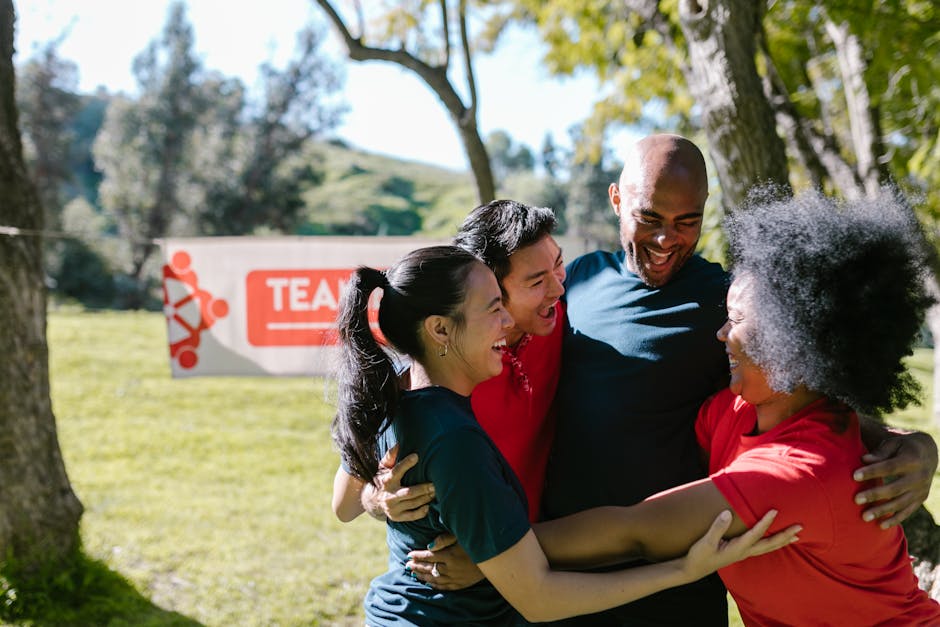Tired of Feeling Lost in the Home Loan Maze?
Get 5 Insider Secrets from NAR(National Association of Realtors) that Make Navigating Your Loan Simple and Stress-Free!
I consent to receive calls and texts from DreamX Homes & Glasshouse Realty Group for real estate information and assistance. You can unsubscribe anytime.
Frame Your Future: Real Estate Photography Tips for Stunning Shots
Frame Your Future: Real Estate Photography Tips for Stunning Shots

Real estate photography tips can transform your property listings from a mere scroll-by into a must-see. When first impressions are crucial, the right photo can make all the difference. Here's a quick snapshot of what you need to know:
- Schedule your shoot during the ‘golden hours’—early morning or late afternoon—for the best natural light.
- Declutter and stage the property to help potential buyers envision themselves living there.
- Use professional-grade equipment for clear and inviting images.
High-quality photos are essential for making a strong first impression. Buyers are often swayed by the initial visuals of a property listing, deciding in mere seconds whether to dig deeper or move on. This underscores the importance of great photography—it's not just about aesthetics but also about selling homes faster.
Real estate photos are the first step in an immersive buyer journey. They set expectations and spark interest, potentially leading to quicker sales and better deals. A well-captured image can highlight a home's best features and create an emotional connection with buyers.
Let's explore what you can do to ensure that your real estate photos stand out and make a lasting impact.

Essential Equipment for Real Estate Photography
To capture stunning real estate photos, you need the right tools. Here's a breakdown of the essential equipment that can lift your images from ordinary to extraordinary:
Professional-Grade Camera
A professional-grade camera is non-negotiable. While smartphones are improving, nothing beats the image quality of a DSLR or mirrorless camera. These cameras offer higher resolution, better low-light performance, and more control over settings. They are your best bet for capturing the intricate details of a property.
Interchangeable Lenses
The ability to switch lenses is a game-changer in real estate photography. Here’s why:
-
Wide-Angle Lenses: Perfect for capturing spacious interiors and expansive exteriors. They can make rooms appear larger and more inviting, which is crucial for selling properties.
-
Macro Lenses: Ideal for highlighting craftsmanship and intricate details, like custom moldings or unique fixtures.
Interchangeable lenses offer flexibility, allowing you to adapt to different shooting conditions and property features.
Tripods
Stability is key to sharp images. A tripod ensures your camera remains steady, especially in low-light conditions or when capturing long exposures. It also helps maintain consistent framing across different shots.
- Pro Tip: Use a tripod for evening shots to capture the ambient lighting that adds warmth and coziness to interiors.
Drones
Drones are revolutionizing real estate photography. They provide unique aerial perspectives that can showcase the full scope of a property and its surroundings. This is particularly appealing for luxury listings or properties with expansive land.
- Fun Fact: Many high-end clients now expect drone photography as part of their marketing package.

Bringing It All Together
Investing in the right equipment is crucial for producing high-quality real estate photos. With a professional-grade camera, versatile lenses, a sturdy tripod, and a drone, you'll be well-equipped to capture images that not only highlight a property's best features but also captivate potential buyers.
Next, we'll explore some essential tips for taking stunning real estate shots, from using natural light to mastering composition techniques.
Real Estate Photography Tips for Stunning Shots
Capturing the perfect real estate photo involves more than just equipment. It's about understanding light, staging, and composition. Let's explore some real estate photography tips that will help you create stunning shots.
Natural Light
Natural light is your best friend in real estate photography. It improves colors, reveals textures, and creates an inviting atmosphere. Aim to shoot during the day when sunlight is soft and diffused. This is usually during the golden hours—right after sunrise and before sunset.
- Tip: Open curtains and blinds to let in as much light as possible. If a room is dark, consider turning on some lights to add warmth.
Staging
Staging a property can transform a space from ordinary to extraordinary. It involves arranging furniture and decor to make the home look its best. A well-staged home tells a story and helps potential buyers imagine living there.
- Tip: Use neutral colors and minimal decor to create a clean, appealing look. Fresh flowers or a bowl of fruit can add a touch of color and life.
Composition Techniques
Composition is all about how you frame your shots. One of the most effective techniques is the rule of thirds. Imagine a grid over your image, dividing it into nine equal parts. Place key elements along these lines or at their intersections to create balance and interest.

- Tip: Use doorways or windows as natural frames within your photos. This adds depth and draws attention to the main subject.
Master the Rule of Thirds
The rule of thirds is a classic composition technique that brings balance and visual harmony to your photos. By positioning key elements along the grid lines, you create a more engaging image.
- Tip: Align prominent features, like a fireplace or a staircase, with the grid lines to improve the composition.
Experiment with Perspectives
Different angles can make a room look larger and more inviting. Try shooting from a corner to capture more of the space. This technique shows the room's dimensions and gives a sense of openness.
- Tip: For kitchens and bathrooms, straight-on shots work well to highlight symmetry and design elements.
By mastering these real estate photography tips, you'll be able to create images that capture the essence of a property and spark the imagination of potential buyers.
Next, we'll discuss how to prepare a property for photography to ensure it looks its best.
How to Prepare a Property for Photography
Preparing a property for photography is just as important as the photography itself. A well-prepared property ensures that the photos will showcase the home in the best possible light, literally and figuratively. Let's break down the key steps to get a property photo-ready.
Cleaning
A clean home is a photogenic home. Dirt and grime can be distracting and make a property look neglected. Before the shoot, make sure every room is spotless. This includes dusting surfaces, vacuuming carpets, and cleaning windows. Clean windows, in particular, allow more natural light to flood in, enhancing the overall brightness of the photos.
- Tip: Pay special attention to kitchens and bathrooms, as these areas can be major selling points for potential buyers.
Decluttering
Clutter is the enemy of good photography. It can make spaces look smaller and less appealing. Remove any unnecessary items, such as personal belongings, excess furniture, and knick-knacks. This helps create a spacious and inviting atmosphere that allows potential buyers to envision themselves in the space.
- Tip: Consider renting a storage unit to temporarily store items that don't contribute to a clean and open look.
Lighting
Lighting is crucial in real estate photography. Aim to maximize natural light by shooting during the day and opening all curtains and blinds. If natural light is insufficient, use interior lights to create a warm and inviting ambiance. Avoid harsh overhead lighting, which can cast unflattering shadows.
- Tip: Use additional lighting equipment like softboxes or reflectors to fill in shadows and ensure even lighting throughout the space.
Shot List
A shot list is your roadmap for the photo shoot. It outlines all the essential shots needed to fully capture the property. This includes wide shots of each room, close-ups of unique features, and exterior shots from different angles. Having a shot list ensures you cover all the bases and makes the editing process smoother.
- Tip: Start with exterior shots in full sunlight and return for dusk shots to capture the property in different lighting conditions.
By focusing on these preparation steps, you'll set the stage for stunning real estate photos that will captivate potential buyers.
Next, we'll explore editing and post-production techniques to make your images truly shine.
Editing and Post-Production Techniques
Once you've captured your shots, it's time to refine them with editing and post-production techniques. This step is crucial in changing good photos into great ones. Let's explore some key techniques to ensure your real estate photos stand out.
Photo Editing Software
Choosing the right photo editing software is essential. Tools like Adobe Lightroom and Photoshop are favorites among professionals. They offer features like color correction, exposure adjustments, and cropping. For beginners, software like Luminar AI provides user-friendly options with AI-powered tools that automate many tasks.
- Tip: Start with free trials to find software that suits your needs before making a purchase.
Color Correction
Color correction can improve the natural beauty of a property. Adjusting white balance ensures that colors are true to life. A neutral or slightly warm tone is ideal for real estate photos, making spaces look inviting and cozy.
- Tip: If photos appear too blue or red, use the software's white balance tool to adjust them to a more natural tone.
HDR (High Dynamic Range)
HDR is a technique that combines multiple exposures to create a balanced image. This is especially useful in real estate photography to capture both bright exteriors and darker interiors in one shot. Tools like Photomatix Pro or the HDR feature in Photoshop make this process easy.
- Tip: Use HDR sparingly to avoid an unnatural look. It should improve the image, not make it look unrealistic.
Avoiding Over-Editing
Less is often more when it comes to editing. Over-editing can make photos look fake and unappealing. It's important to improve the image without altering the reality of the space. Avoid excessive saturation, sharpening, and distortion corrections.
- Tip: Keep a copy of the original image as a reference to ensure your edits improve, not alter, the property.
By mastering these photo editing techniques, you'll ensure your real estate photos are polished and professional, ready to impress potential buyers.
Next, we'll tackle some frequently asked questions about real estate photography tips.
Frequently Asked Questions about Real Estate Photography Tips
How can I make my real estate pictures look better?
To make your real estate pictures stand out, start with a clean property. A tidy space highlights the home's best features and helps potential buyers imagine themselves living there. Remove clutter and personal items to create a spacious, inviting atmosphere.
Good lighting is crucial. Shoot during the day to take advantage of natural light. Open curtains and blinds to let in as much light as possible, and use additional lighting equipment like softboxes or reflectors if needed. This ensures even lighting throughout the space.
Selecting the right lens can make a big difference. Use wide-angle lenses to capture more of the room, making spaces appear larger and more inviting. For details, a macro lens can highlight unique features like intricate woodwork or stylish fixtures.
What is the rule of thirds in real estate photography?
The rule of thirds is a composition technique that helps create balanced and visually appealing images. Imagine your frame divided into a 3x3 grid. Place important elements along these lines or at their intersections to guide the viewer's eye naturally through the photo.
In real estate photography, use the rule of thirds to position architectural features, like doorways or windows, in a way that adds balance and visual harmony. This technique makes your photos more engaging and helps potential buyers focus on the property's highlights.
How to take excellent real estate photos?
To take excellent real estate photos, pay attention to perspective. Position yourself at a room's corner or doorway to capture a sense of depth and space. This approach helps convey the true size of the room.
Take multiple shots from different angles. Experimenting with various perspectives allows you to choose the best photo during editing. Capture wide shots to showcase entire rooms, and don't forget close-ups for unique details.
Be mindful of reflections. Mirrors, windows, and shiny surfaces can create unwanted glare or show the photographer in the frame. Adjust your angle or use polarizing filters to minimize these distractions.
By following these real estate photography tips, you can create stunning images that attract potential buyers and showcase properties in their best light.
Conclusion
At Glasshouse Realty Group, we understand the transformative power of professional photography in real estate. A picture isn't just worth a thousand words—it's a gateway to a buyer's future. When done right, real estate photography can significantly improve your listings, making them stand out in a crowded market.
Professional photography is more than just snapping a few pictures. It's about capturing the essence of a home and creating a compelling vision for potential buyers. As Michael Yates, Marketing Director at Virtuance, puts it, "Professional photography is the most critical element of your listing marketing strategy." It draws buyers in, leading to more showings, offers, and ultimately, a higher sale price.
By investing in quality images, you not only highlight the property's best features but also help buyers envision their lives in that space. Whether it's the cozy warmth of a living room or the sleek design of a modern kitchen, great photos can evoke emotions and prompt action.
At DreamX.Homes, part of Glasshouse Realty Group, we're committed to helping you frame your future. With our expertise in real estate and dedication to transparent transactions, we ensure your property is presented in the best light possible. Explore our Crosby Township listings to see how stunning photography can transform a listing and attract the right buyers.
In today's competitive market, enhancing your listings with professional photography isn't just an option—it's a necessity. Let us help you make that crucial first impression and turn potential buyers into proud homeowners.
Categories
- All Blogs 92
- Boosting Home Value 3
- Buyer Resources 13
- Eco-Friendly Upgrades 1
- First-Time Buyer Tips 2
- Home Buying & Selling 3
- Home Improvement & Staging 5
- Investment & Financing 14
- Local Attractions & Schools 5
- Local Market Trends 8
- Local Policy Changes 2
- Market & Industry News 2
- Market Insights 6
- Mistakes to Avoid 1
- Mortgage & Financing 22
- Neighborhood Spotlights 12
- Neighborhoods & Lifestyle 18
- New Construction 10
- Real Estate News & Updates 4
- Real Estate Technology 2
- Seller Resources 4
- Staging Tips 2
- Sustainability 3
Recent Posts










Tired of Feeling Lost in the Home Loan Maze?
Get 5 Insider Secrets from NAR(National Association of Realtors) that Make Navigating Your Loan Simple and Stress-Free!
I consent to receive calls and texts from DreamX Homes & Glasshouse Realty Group for real estate information and assistance. You can unsubscribe anytime.

"My job is to find and attract mastery-based agents to the office, protect the culture, and make sure everyone is happy! "

